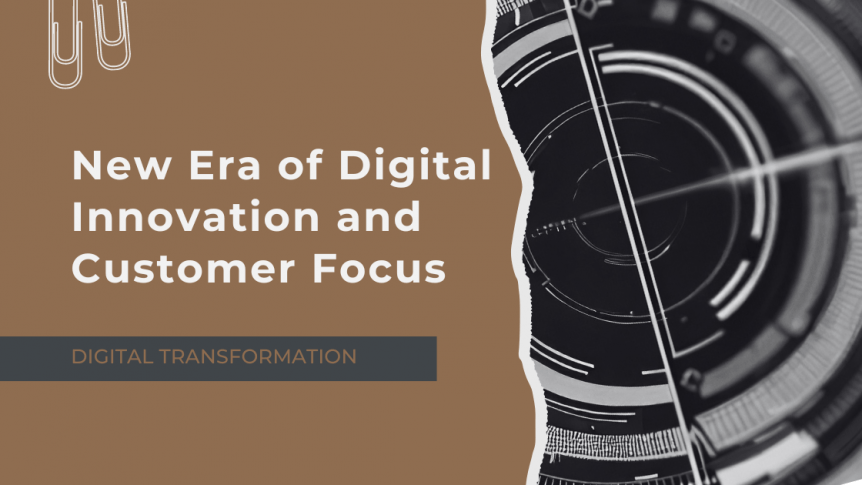Full article with thanks to: forbes.com/sites/forbesfinancecouncil/2019/12/11/what-digital-and-underwriting-changes-mean-to-the-insurance-industry/?sh=f52fbe163e88
Digital transformation is disrupting the insurance industry, and the changes are creating both new demands and new opportunities. While quick online quotes may be the most readily evident transformation that has occurred to date, they’re merely the surface of what is in store for the industry. From product creation to financing to automated underwriting, everything is becoming more specific and more streamlined. Here are five changes that have already begun to emerge.
New Technologies Require New Insurance Products
The advent of new technologies is rapidly increasing demand for new insurance products. Auto insurance policies that address issues related to operating semi-autonomous and fully autonomous vehicles are already needed, and increased smart home connectivity is creating previously unseen risks that homeowners’ forms will soon have to address. Even byproducts of advancements, such as the recent rise in ride-sharing and house-sharing, come with additional risk mitigation concerns that call for adjustments to policies.
As new technologies are developed, insurers will need to stay current with the risks the advancements present. Insurance policies have always undergone reviews and adjustments, but this is a time when major changes will need to be made to many policies, underwriting and how insurance risk and finance are analysed. Some altogether new insurance products will be needed, as well.
Marketing Requires Customer Education
It’s always been the job of insurance professionals to contemplate “what if” scenarios that most people normally don’t entertain, and then to help people think through those possibilities when they purchase policies and select coverages. With the coming of new risks and insurance products, however, this part of the insurance industry’s job becomes especially important.
Marketing new products will require a significant amount of customer education, as people aren’t used to thinking beyond the common perils that property and casualty policies have historically protected against. Insurance agents and marketers will need to help people and businesses think through the digital risks they face and appreciate how insurance can help mitigate against those risks. Additionally, companies will need to drastically adjust their marketing spend and percent allocation over time.
Targeted And Personalised Ad Campaigns Reach Prospective Customers
The combination of splintering media channels and big data has given marketers in all industries opportunities that previous generations couldn’t fathom. Rather than running general campaigns based on broad demographics, ad campaigns can now be based on narrowly defined demographics and even personalised for individuals.
Specifically, within the insurance industry, targeted and personalised ads offer lots of potential. Knowledge of what people have and do naturally lends itself to showing them related ads, and marketers can develop risk tolerance profiles of individuals based on their demographics and known history. Marketing, business and finance teams can then run key analyses on customer buying and post-purchase behavior based on these ad campaigns.
Of course, bidding for advertising space isn’t cheap. To effectively run targeted campaigns, teams will need to continually invest in customer data and research methods of leveraging that information.
Streamlined Processes Improve User Experience
While companies in the industry have already and will undoubtedly continue to develop streamlined processes that reduce costs, finances can’t be the only thing companies focus on when they’re digitising different aspects of their business. User experience is just as important, and streamlining can do a lot to improve satisfaction scores in this area. For instance, streamlined processes can be used to:
• Provide prospective customers with faster and more accurate quotes.
• Provide instant quotes that impact the underlying underwriting algorithm.
• Give prospective and current customers 24/7 access to support.
• Reduce wait times when customers ask support questions.
• Process claims more quickly for policyholders who have them.
• Assess damage more accurately and quickly.
• Document possessions more accurately and quickly.
As an example, consider the use of smartphone cameras. They make it incredibly easy to document most belongings people have, and they can be used to submit claims for damage these belongings sustain. The images are objective and documented, and they can be uploaded to a company’s system almost instantly. While this is all much less expensive than sending an adjuster to every claim, the instantaneousness and simplicity are likely even more important to most people.
Automated Underwriting Is More Efficient And Accurate
Within the industry itself, advancements in artificial intelligence will revolutionise the underwriting process. Computers will make premium calculations and other judgements based on their own machine learning and vast stores of data, rendering actuarial tables and manually entering information old-fashioned. The result will be faster and more accurate underwriting. And this in turn impacts the balance sheet, how investment decisions are thought through at the insurer and core algorithms that drive risk and underwriting.
Digitisation Must Be Embraced For Future Success
Digitisation is already here, and it’s very much the future of the insurance industry. To have success in the future, companies must not only embrace the advancements, but find creative ways to utilise the changes to create systems that are faster, more accurate and easier to use. Companies that accomplish this are the ones that will be leading the industry in the years to come.
Full article with thanks to: forbes.com/sites/forbesfinancecouncil/2019/12/11/what-digital-and-underwriting-changes-mean-to-the-insurance-industry/?sh=f52fbe163e88
Did you enjoy that? Why not share this article.
We specialise in supporting change across the insurance sector, helping insurance businesses (and other businesses like distribution and logistics) adapt seamlessly.
Our services include Change & Transformation, M&A Integration, Business Process Management and Executive Coaching. We help make organisational change and technology change much easier.
Got a question about our services? Get in touch and leave a message

